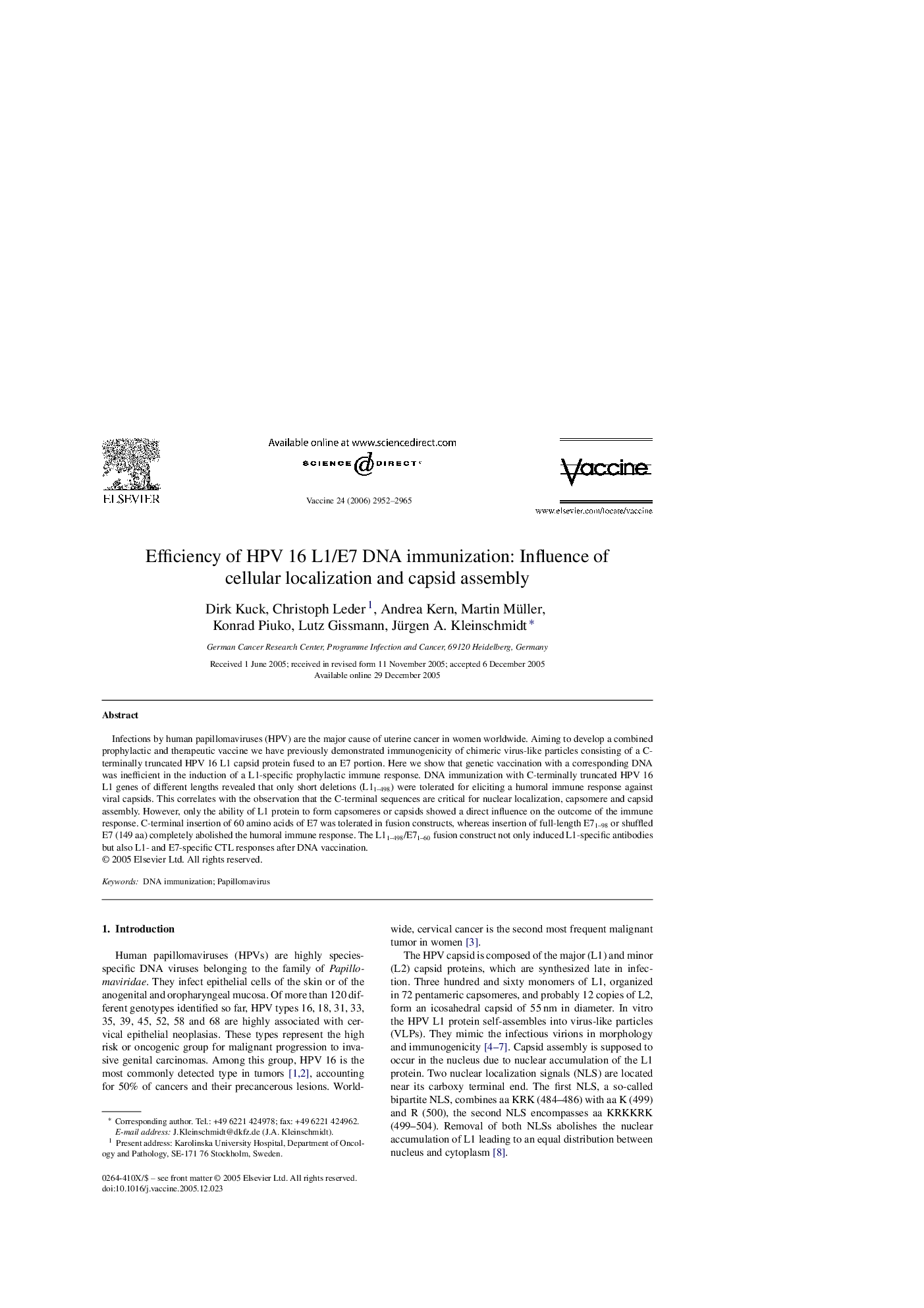| Article ID | Journal | Published Year | Pages | File Type |
|---|---|---|---|---|
| 2410422 | Vaccine | 2006 | 14 Pages |
Abstract
Infections by human papillomaviruses (HPV) are the major cause of uterine cancer in women worldwide. Aiming to develop a combined prophylactic and therapeutic vaccine we have previously demonstrated immunogenicity of chimeric virus-like particles consisting of a C-terminally truncated HPV 16 L1 capsid protein fused to an E7 portion. Here we show that genetic vaccination with a corresponding DNA was inefficient in the induction of a L1-specific prophylactic immune response. DNA immunization with C-terminally truncated HPV 16 L1 genes of different lengths revealed that only short deletions (L11-498) were tolerated for eliciting a humoral immune response against viral capsids. This correlates with the observation that the C-terminal sequences are critical for nuclear localization, capsomere and capsid assembly. However, only the ability of L1 protein to form capsomeres or capsids showed a direct influence on the outcome of the immune response. C-terminal insertion of 60 amino acids of E7 was tolerated in fusion constructs, whereas insertion of full-length E71-98 or shuffled E7 (149 aa) completely abolished the humoral immune response. The L11-498/E71-60 fusion construct not only induced L1-specific antibodies but also L1- and E7-specific CTL responses after DNA vaccination.
Keywords
Related Topics
Life Sciences
Immunology and Microbiology
Immunology
Authors
Dirk Kuck, Christoph Leder, Andrea Kern, Martin Müller, Konrad Piuko, Lutz Gissmann, Jürgen A. Kleinschmidt,
